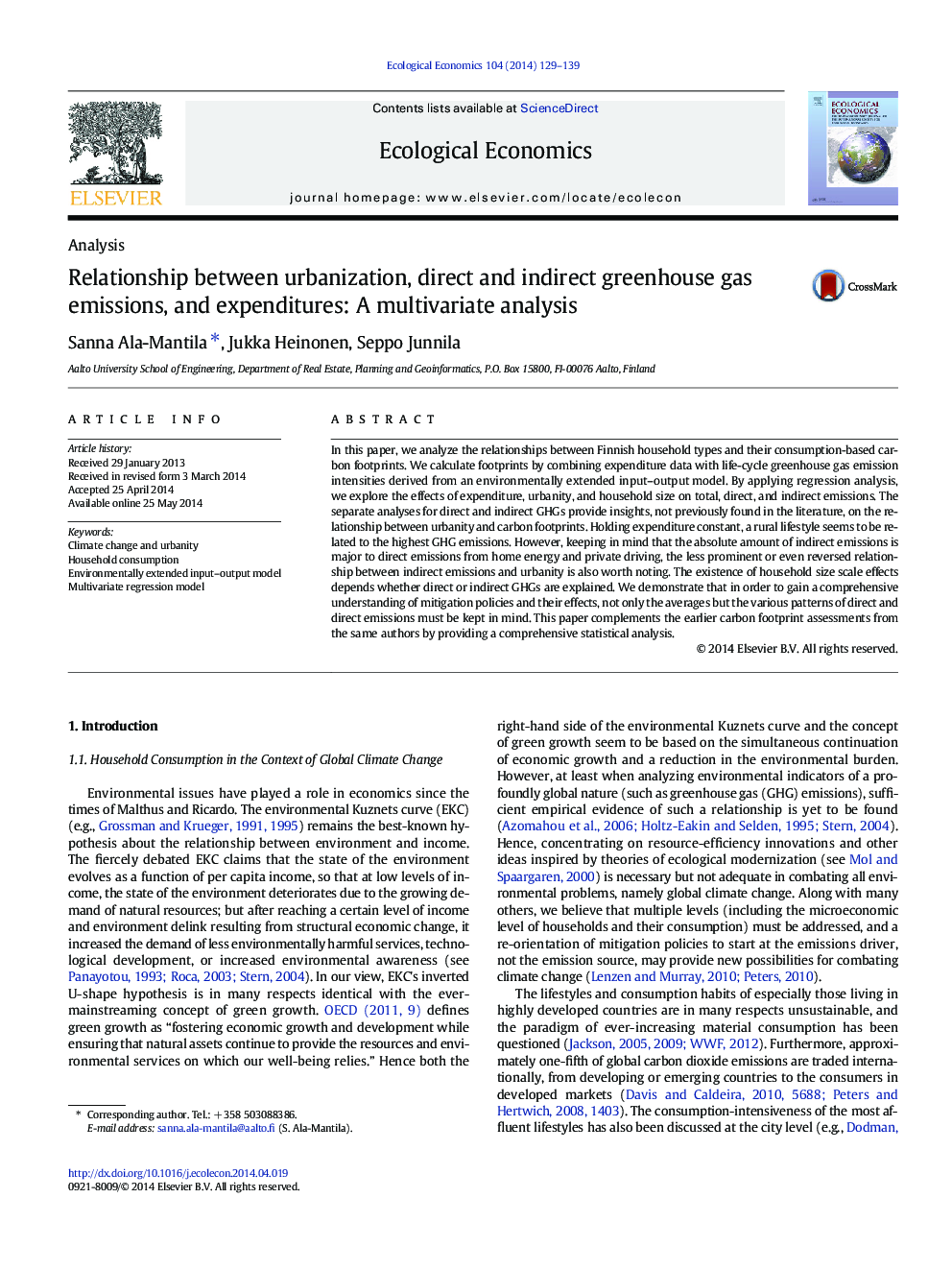| Article ID | Journal | Published Year | Pages | File Type |
|---|---|---|---|---|
| 5049556 | Ecological Economics | 2014 | 11 Pages |
In this paper, we analyze the relationships between Finnish household types and their consumption-based carbon footprints. We calculate footprints by combining expenditure data with life-cycle greenhouse gas emission intensities derived from an environmentally extended input-output model. By applying regression analysis, we explore the effects of expenditure, urbanity, and household size on total, direct, and indirect emissions. The separate analyses for direct and indirect GHGs provide insights, not previously found in the literature, on the relationship between urbanity and carbon footprints. Holding expenditure constant, a rural lifestyle seems to be related to the highest GHG emissions. However, keeping in mind that the absolute amount of indirect emissions is major to direct emissions from home energy and private driving, the less prominent or even reversed relationship between indirect emissions and urbanity is also worth noting. The existence of household size scale effects depends whether direct or indirect GHGs are explained. We demonstrate that in order to gain a comprehensive understanding of mitigation policies and their effects, not only the averages but the various patterns of direct and direct emissions must be kept in mind. This paper complements the earlier carbon footprint assessments from the same authors by providing a comprehensive statistical analysis.
